Northumberland
Explore hidden histories, historic photos, and things you never knew about Northumberland from the collections and archives of Historic England.
Discover your local listed buildings and places
Introducing some of Northumberland's most historic sites, included in the National Heritage List for England. Some of these captions have been summarised by AI. Click through for the official List entry. Skip this section and go to place by numbers
Frontiers of the Roman Empire (Hadrian's Wall)
Acomb
The official listing for all World Heritage sites is held by UNESCO and can be found on their website.
Coast Defence Chain Home Low Radar Station, Craster
Craster
Second World War Chain Home Low Radar Station, 1941. Read the official list entry to find out more.
Hartford Hall
West Bedlington
Hartford Hall, built around 1807 for William Burdon by William Stokoe and altered in 1875, is notable for its neoclassical architecture and rich interior details.
Roman aqueduct to Great Chesters from the Cawburn
Greenhead
Roman aqueducts employed gravity flow for water supply, aiding domestic, industrial, and social activities like bathing.
Bremenium Roman station, High Rochester
Rochester
Bremenium Roman Station features noteworthy surviving walls and earthworks, representing Roman military strategy and policy, offering significant archaeological and environmental evidence of...
Beaufront Castle
Sandhoe
Beaufront Castle, designed by John Dobson between 1836-1841, combines Gothic and Tudor styles with structures from the late 17th century, renowned for its rich architectural details and...
Seaton Delaval
Seaton Valley
Seaton Delaval, designed by Sir John Vanbrugh, was completed in 1728 for Captain Francis Delaval. It features formal gardens, a kitchen garden, and historical landmarks.
Grammar School
Berwick-upon-Tweed
The Grammar School, built in 1754, features three storeys with pilastered doorpiece and sash windows. It holds historical significance as a Grade II* listed building.
Belford Hall
Belford
Belford Hall, designed by James Paine in the 18th century, is a Palladian-style country house. The estate features extensive pleasure grounds and was renovated as apartments in the 1980s.
Aydon Castle medieval hall, fortified manor and eighteent…
Corbridge
Aydon Castle, dating from the late 12th century, is a well-preserved example of a fortified manor, featuring medieval manor remains and historic architectural elements.
Pier and Lighthouse
Berwick-upon-Tweed
Pier 1810-1825 by John Rennie, and lighthouse, 1826 to the designs of Joseph Nelson. Read the official list entry to find out more.
General Lambert's House
Alnwick
General Lambert's House is a notable early 19th-century structure with three storeys, distinctive windows, and doors, categorized as Grade II* listed.
Tillmouth Park
Cornhill-on-Tweed
Tillmouth Park, now a hotel, features picturesque pleasure grounds and gardens developed over centuries with connections to Twizel Castle.
Gloucester Lodge Heavy Anti-Aircraft Battery
Seaton Valley
Gloucester Lodge Battery includes the buried, earthwork and standing remains of a multi-phase Second World War heavy anti-aircraft gun battery and radar site, as well as a Cold War heavy...
West Wylam Bridge
Wylam
West Wylam Bridge, built in 1876 by William George Laws, features a wrought-iron single span with roadway suspended from parabolic arches.
Smokehouse, Craster
Craster
Smokehouse, mid-C19, possibly part converted from an existing building. Read the official list entry to find out more.
Walker's Pottery
Corbridge
The standing, buried and earthwork remains of a post-medieval pottery originally known as Walker's Pottery.
Hesleyside
Bellingham
Hesleyside is a mid to late 18th-century park with earlier formal elements around a 14th-century pele tower, enhanced by gardens and terraces in the 19th century.
The Old Queen Elizabeth Grammar School
Hexham
Free grammar school and attached master's house constructed in 1684, and slightly later caretaker's house, with C18, C19 and C20 alterations. Tudor-gothic style.
St Mary's Island Lighthouse, Keepers' Cottages and Compou…
North Tyneside
A late C19 Trinity House lighthouse designed by Sir Thomas Matthews, engineer-in-chief to the Trinity House Board; with keepers' cottages, compound and flanking walls situated on St Mary's...
Great Chesters Roman fort and Hadrian's Wall between the …
Greenhead
Hadrian's Wall and Great Chesters fort illustrate Roman defensive strategy in Britain, showcasing surviving structures and historical adjustments against northern unrest from the 2nd to 4th...
Haughton Castle
Humshaugh
Haughton Castle, a Grade I listed structure, originated in the 13th century with significant remodels in the 14th and 19th centuries.
Lee Hall
Bellingham
Lee Hall is an early 18th-century house with a 17th-century core, featuring ashlar facade and Welsh slate roof, showcasing historical interior details like fireplaces and panelling.
Wylam Hall
Wylam
Wylam Hall, a Grade II* listed house, dates back to the 15th century. It features a mix of architectural styles from the 15th to late 19th century.
Alnwick Castle
Alnwick
Alnwick Castle's parks, developed since the 13th century, feature diverse landscapes, significant historical connections to the Percy family, and works by renowned architects like James...
Manside defended settlement and medieval cross
Elsdon
The Manside site includes a medieval cross and a rare Romano-British settlement, important for its unusual form and archaeological significance in Northumberland.
The Hexham Parks
Hexham
Hexham Parks, comprising Sele, Abbey Grounds, and Hexham House Grounds, serve as public parks with historical roots in the 18th century, offering scenic views and community spaces.
Belsay Hall
Belsay
Belsay Hall, a remarkable Greek Doric house, is set in a picturesque landscape designed by Sir Charles Monck between 1806-67, with significant historical ties to the Middleton family.
Whitley Castle Roman fort and vicus, 280m south west of C…
Knaresdale with Kirkhaugh
Whitley Castle Roman Fort in England is a rare example of a multi-ditch Roman fort, significant for understanding Roman military strategy and its interactions with local cultures.
Cragside
Brinkburn
Cragside was developed from 1863 onwards by William Armstrong and his wife Margaret, featuring extensive gardens and landscapes, renowned for its engineering advancements and cultural...
Former Berwick Court House and Prison with attached wall …
Berwick-upon-Tweed
Court house and prison with attached wall 1846-1849, to the earlier designs of Thomas Brown; prison range extended 1867 by W J Gray.
Old Rothbury multivallate hillfort and cairnfield
Rothbury
The Old Rothbury hillfort is a well-preserved Iron Age site overlooking the River Coquet, offering insights into prehistoric settlement and social organization.
Newton Hall
Newton-by-the-Sea
Newton Hall, a late 18th-century country house in Northumberland, features a Scottish slate roof, marble fireplaces, Venetian window designs, and has historical significance linked to Joseph...
Fandango's Club
Hexham
Fandango's Club, a 17th-century structure with 18th and 19th-century decorations, features a solid oak staircase and is part of a significant architectural group.
Unknown wreck, 600m ENE of Bamburgh Castle
Bamburgh
The wreck of a pre-1840 unknown wooden sailing vessel thought to be later C18 in origin. Read the official list entry to find out more.
Brinkburn Priory Augustinian priory, mill, gateway and po…
Brinkburn
Brinkburn Priory is a well-preserved example of an Augustinian monastery, showcasing late 12th-century architecture and medieval remains, including the priory mill and gateway.
Kirkharle Hall
Kirkwhelpington
Kirkharle Hall was transformed by Sir William Loraine in the 18th century, involving Lancelot "Capability" Brown. Later, the estate was sold and partially demolished by Thomas Anderson.
Cragside
Rothbury
Cragside is a Victorian country house, home to industrialist Lord Armstrong, known for its eclectic architectural style and being the first to use hydroelectric power for lighting.
Explore more
Search for more listed placesNorthumberland through time
This timeline shows the first period of use for buildings and places on the National Heritage List for England, just one of the details recorded for every list entry. Click around to see how Northumberland changes over time. Skip this section and go to aerial photos
Prehistoric Before AD 43
Prehistory covers a million years of human occupation before the Roman invasion and the introduction of writing. Primarily hunter-gatherers of several human species including Neanderthals, the peoples moved across Europe, hunting animals, exchanging ideas and developing complex culture and belief systems including burial rites and astronomical understanding, as at Stonehenge for example.
Roman AD 43 to AD 410
Britain was invaded by four legions of the Roman army in AD 43, who relatively rapidly conquered England from landing points in Kent. Parts of Wales and Scotland soon followed.
Roman culture brought urbanism, monumental buildings, wide-ranging religious beliefs, writing, and strong social hierarchy. The Roman administrative system was withdrawn in AD 410.
Early medieval AD 410 to AD 1066
This period, often associated in England with Anglo-Saxons and Vikings, saw a reduction in urban living from the Roman period and increased migration from northern Europe.
Traces of this period can be found in cemeteries, particularly in artefacts and in some of the very early churches, as this period also saw the growth of Christianity in Britain.
Medieval AD 1066 to AD 1540
This period, sometimes known as the Middle Ages, began with the Norman invasion in AD 1066. It saw a significant rise in military and defensive buildings such as castles and earthworks, as well as religious houses dominating a largely agricultural landscape.
The monarchy and Church dominated the period, which also saw the break with the Roman Catholic Church and the English reformation.
Post medieval AD 1540 to AD 1901
The Post-Medieval period brought seismic changes to life in England, with religious reformation leading to the democratization of worship and the destruction of hundreds of religious houses.
In parallel, there was a huge expansion of scientific study and enlightenment that permanently altered the nation's social structure and landscape. Industrialization and mass production lead to wider global trade, emigration, and immigration.
20th century AD 1901 to AD 2000
The 20th century saw an incredible expansion of England's transport networks, with suburban growth shadowing rapid infrastructural expansion. The establishment of state schools, hospitals, and modern technical colleges, with new architectural styles, radically changed the appearance of towns and cities.
Two catastrophic world wars and the 1918 pandemic also brought unprecedented change, altering England's built environment and social structures forever.
Prehistoric Before AD 43
Prehistory covers a million years of human occupation before the Roman invasion and the introduction of writing. Primarily hunter-gatherers of several human species including Neanderthals, the peoples moved across Europe, hunting animals, exchanging ideas and developing complex culture and belief systems including burial rites and astronomical understanding, as at Stonehenge for example.
Roman AD 43 to AD 410
Britain was invaded by four legions of the Roman army in AD 43, who relatively rapidly conquered England from landing points in Kent. Parts of Wales and Scotland soon followed.
Roman culture brought urbanism, monumental buildings, wide-ranging religious beliefs, writing, and strong social hierarchy. The Roman administrative system was withdrawn in AD 410.
Early medieval AD 410 to AD 1066
This period, often associated in England with Anglo-Saxons and Vikings, saw a reduction in urban living from the Roman period and increased migration from northern Europe.
Traces of this period can be found in cemeteries, particularly in artefacts and in some of the very early churches, as this period also saw the growth of Christianity in Britain.
Medieval AD 1066 to AD 1540
This period, sometimes known as the Middle Ages, began with the Norman invasion in AD 1066. It saw a significant rise in military and defensive buildings such as castles and earthworks, as well as religious houses dominating a largely agricultural landscape.
The monarchy and Church dominated the period, which also saw the break with the Roman Catholic Church and the English reformation.
Post medieval AD 1540 to AD 1901
The Post-Medieval period brought seismic changes to life in England, with religious reformation leading to the democratization of worship and the destruction of hundreds of religious houses.
In parallel, there was a huge expansion of scientific study and enlightenment that permanently altered the nation's social structure and landscape. Industrialization and mass production lead to wider global trade, emigration, and immigration.
20th century AD 1901 to AD 2000
The 20th century saw an incredible expansion of England's transport networks, with suburban growth shadowing rapid infrastructural expansion. The establishment of state schools, hospitals, and modern technical colleges, with new architectural styles, radically changed the appearance of towns and cities.
Two catastrophic world wars and the 1918 pandemic also brought unprecedented change, altering England's built environment and social structures forever.
Aerial photos of Northumberland
Aerial photography helps reveal secrets of England's changing landscapes that are impossible to see from the ground. Skip this section and go to archive images

Bamburgh
Bamburgh Castle and the Castle Green, Bamburgh, 1947
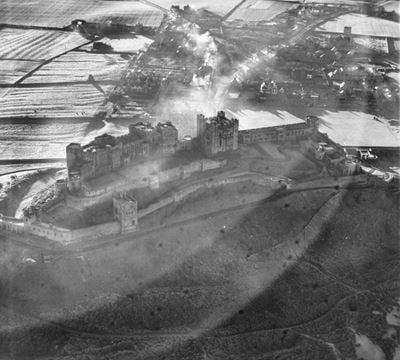
Bamburgh
Bamburgh Castle overlooking the village, Bamburgh, 1950

Chillingham
Chillingham Castle, Chillingham, 1947
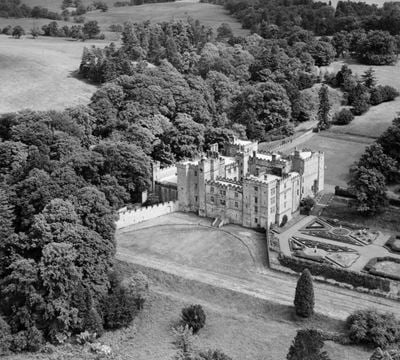
Chillingham
Chillingham Castle, Chillingham, 1947
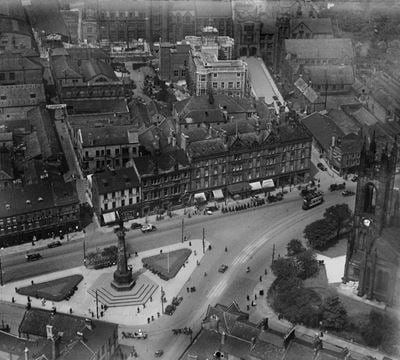
Newcastle Upon Tyne
The Grand Hotel, South African War Memorial and St Thomas the Martyr's Church, Newcastle upon Tyne, 1924

Newcastle Upon Tyne
The Civic Centre and Church of St Thomas the Martyr, Newcastle upon Tyne, 1975

Alnwick
Alnwick Castle, Alnwick, 1932

Alnwick
Alnwick Castle, Alnwick, 1947

Newham
Newham Hall, Newham, 1947
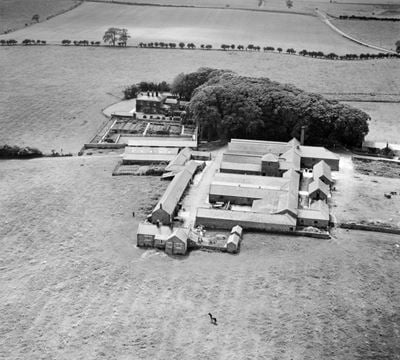
Newham
Newham Hall, Newham, 1947
Northumberland in the Historic England Archive
The Historic England Archive cares for over 15 million images, dating from the 1850s to the present day. Discover stunning images of Northumberland's past. Skip this section and go to stories about heritage
Charles George Harper Collection
Greenhead, Northumberland
Date created: 1892 - 1933
The gatehouse at Greenhead, at the entrance to the avenue leading to Black Hedley
Eric de Mare
Seaton Delaval, Northumberland
Date created: 1945 - 1980
Exterior detail view of Seaton Delavel Hall showing the portico on the park side. The baroque house was designed by John Vanbrugh in 1718.
John Gay Collection: Counties
Northumberland
Date created: 1950s
A long straight country road near Stamfordham
John Laing Collection
Northumberland
Date created: Jun 1949
View of 3,600 lb explosion at Stobswood opencast coal mine
Alfred Newton and Sons
Hareshaw Burn, Northumberland
Date created: 1900
GENERAL VIEW ALONG HARESHAW BURN
Nigel Temple Collection of Postcards of Parks and Gardens
Ridley Park, Northumberland
Date created: 1900 - 1915
COLOUR TINTED PHOTOGRAPHIC REPRODUCTION SHOWING GENERAL VIEW LOOKING TOWARDS THE BANDSTAND
Walter Scott
Northumberland
Date created: 1936 - 1945
The Grace Darling Memorial in the churchyard at St Aidan's Church
Charles George Harper Collection
Northumberland
Date created: 1892 - 1933
Looking across the railway tracks towards George Stephenson's Cottage
Eric de Mare
Northumberland
Date created: 1945 - 1980
Detail view of the Percy Tenantry Column in Alnwick showing two lions at the base of the monument.
John Gay Collection: Counties
Northumberland
Date created: 1950s
A long straight country road near Stamfordham
John Laing Collection
Northumberland
Date created: 05 Jun 1996
A member of Laing's Cumbria Club for retired employees posed beside an early bicycle exhibit during a visit to Alnwick Castle
Stories about heritage in your local area
Historic England publishes news, blogs, research, videos, and podcasts celebrating England's rich heritage. Discover the stories we have about Northumberland. Skip this section and go to education
What Was the Capital of England Before London?
Mentions Bamburgh Castle
London is England’s capital city now, but when was it founded? And what was the capital of England before London?
What Happened After the End of Roman Rule in Britain?
Mentions Hadrians Wall Milecastle and Turrets Hadrians Wall, Milecastle and Turrets, Housesteads fort, section of Wall and vallum between the field boundary west of milecastle 36 and the field boundary west of turret 37a in wall miles 36 and 37
After the fall of the Roman Empire in Britain around AD 410, many towns declined, industries ceased, and the Roman army left England's shores.
What Is the Oldest Castle in England?
Mentions Warkworth Castle motte and bailey castle, tower keep castle and collegiate church
Discover the oldest English castle contenders, including the Norman Berkhamsted Castle, Windsor Castle, Dover Castle and The White Tower, London.
The Legend of King Arthur
Mentions Housesteads fort, section of Wall and vallum between the field boundary west of milecastle 36 and the field boundary west of turret 37a in wall miles 36 and 37
King Arthur was central to the legendary tales of medieval romance. Discover the places connected to Camelot, Tintagel, and the Battle of Badon Hill.
Battles, Castles and Ships: England’s Military History from the Air
Mentions Bamburgh Castle
Discover England's military history through aerial photography from the Aerofilms Collection.
The Life and Work of John Smeaton, the ‘Father of Civil Engineering’
Mentions Coldstream Bridge (That Part in England)
Discover the remarkable feats of engineering by British civil engineer John Smeaton.
5 Places of South Asian Heritage in North East England
Mentions 44-48, Cloth Market, Old Customs House
Delve into the rich narratives, traditions, and legacies of South Asian communities woven into the fabric of this diverse corner of England.
8 Places Connected to Black History in Newcastle
Mentions 10 and 12, Nelson Street, Brunswick Methodist Chapel, Northumberland Baths/city Hall
Uncover stories of how people of African descent have made history in Newcastle-upon-Tyne.
16 Historic Gardens and Landscapes to Visit
Mentions Belsay Hall
Try these English gardens if you’re looking for somewhere with spectacular garden scenery.
16 Stories of African Lives in Northern England
Mentions The Black Gate, Theatre, Theatre Royal, Numbers 1-8 (Consecutive) And Steps, Railings and Area Railings in Front
Discover the often untold stories of brilliant and resilient people of African heritage.
A Brief Introduction to Military Pillboxes
Mentions Dunstanburgh Castle, Dunstanburgh Castle: Romano-British settlement, 14th century enclosure castle and harbour, and World War II pillbox and foxhole
Explore some of the anti-invasion defences built across England during the First and Second World Wars.
5 Art Nouveau Buildings in England
Mentions Emerson Chambers
Explore some of England’s beautiful Art Nouveau buildings featuring flowing lines and floral designs.
Rare First World War Practice Trenches in Gosport Scheduled
Mentions World War I practice trenches 740m north west of Short Fell
The well-preserved site at Browndown, Gosport in Hampshire has been designated as a scheduled monument.
16 Remarkable Historic Places Listed in 2023
Mentions Coast Defence Chain Home Low Radar Station, Craster
Take a closer look at the historic gems that were examined, protected and added to the National Heritage List for England in 2023.
Famous Northumberland Smokehouse Listed
Mentions Smokehouse, Craster
A 19th century Northumberland smokehouse used for producing world famous kippers has been listed at Grade II by DCMS on the advice of Historic England
Historic England Highlights Fascinating Heritage Sites Listed in 2022
Mentions Milestone 7
As 2022 draws to a close, Historic England highlights gems added to the National Heritage List for England (NHLE) over the last 12 months.
New Interactive Centenary Map of UK Buildings and Places That Have Defined the BBC
Mentions The Mitre Public House
Launched by Historic England, Historic Environment Scotland, Historic Environment Division, Northern Ireland Communities Department and Cadw.
Black British History Highlighted by New Listings and Amendments on the National Heritage List for England
Mentions Baptist Church
Two new listings and three amendments to existing listings announced to mark Black History Month 2022.
Daylight Harvesting and Historic Buildings
Mentions Bessie Surtees House and Milbank House
This article explores how energy can be saved by utilising and controlling daylight and reducing our reliance on artificial lighting.
Historic England Reveals its Heritage at Risk Register 2021
Mentions Cresswell Tower
Historic England publishes its annual Heritage at Risk Register, the yearly health-check of England’s most valued historic places.
Captivating Sites Across England Listed During 2020
Mentions East Woodburn Bridge
Highlights from over 400 historic places which have been added to the National Heritage List for England in 2020.
Heritage at Risk in England Revealed in 2020
Mentions Church of All Saints
Historic England has revealed the historic sites most at risk of being lost forever as a result of neglect, decay or inappropriate development.
Unusual Second World War Sites Listed and Upgraded to Mark the 80th Anniversary of the Battle of Britain
Mentions Druridge Bay pillbox
Four new listings are highlighted alongside three other sites either upgraded or re-listed which show how the Battle has left its mark across England.
Historic England Announces Covid-19 Emergency Grants to Help Recovery of Heritage Sector
Mentions Low Lighthouse and Building Attached to North
£1.8 million in grants for 70 projects to help tackle the impact of Coronavirus on the heritage sector.
Northumberland's social history through photos
Over 10,000 images from the Historic England Archive have been specially selected and re-captioned for teachers, students, and anyone who wants to learn more about their local area. Skip this section and go to grant-aided places
Wood's Restaurant, Berwick-upon-Tweed, Northumberland
Period: Edwardian (1902 - 1913)
Waitresses serve afternoon tea in Wood's Restaurant.
Women's Institute, Newbrough, Northumberland
Period: Victorian (1837 - 1901)
This building was built as a Women's Institute. Between the ground and 1st floor windows are inscribed panels that read 'The Women's' and 'Institute'.
Women's Institute, Newbrough, Northumberland
Whittingham Tower, Whittingham, Northumberland
Period: Medieval (Middle Ages) (1066 - 1484)
This tower house was built in the late 13th or early 14th century. It was altered in 1603 and again in 1845.
Whittingham Tower, Whittingham, Northumberland
Warkworth Castle, Warkworth, Northumberland
Period: Medieval (Middle Ages) (1066 - 1484)
Warkworth Castle from the east across the River Coquet with houses between. A motte and bailey castle was built here in the early 12th century.
Warkworth Castle, Warkworth, Northumberland
Warkworth Castle, Warkworth, Northumberland
Period: Medieval (Middle Ages) (1066 - 1484)
A motte and bailey castle was built here in the early 12th century. The first stone castle was built here in 1139.
Warkworth Castle, Warkworth, Northumberland
Waren Mill, Easington, Northumberland
Period: Georgian (1714 - 1836)
This watermill was built in 1783. It was used for grinding corn. Records suggest that a water-powered corn mill has existed at Waren Mill since 1187.
Waren Mill, Easington, Northumberland
Walker's Pottery, Corbridge, Northumberland
Period: Victorian (1837 - 1901)
Walker's Pottery operated from the early 19th century until c1914. It made pipes, tiles and low-grade pottery for agricultural use, as well as bricks.
Walker's Pottery, Corbridge, Northumberland
Village Lockup, Stamfordham, Northumberland
Period: Georgian (1714 - 1836)
This village lockup was built in the early 19th century. Inside there are still chains attached to the walls.
Village Lockup, Stamfordham, Northumberland
Visit grant-aided places near you
These places and buildings have been helped by Historic England's financial grants. Find historic places in your neighbourhood that you never knew existed! Please note that opening times may vary. Skip this section and go to related locations
Tynemouth Station, Station Terrace
The Grade II* listed railway station, built around 1882 by William Bell of the North Eastern Railway Company, showcases ornate ironwork in platform...
All Saints Church, Akenside Hill
All Saints is a late 18th-century former parish church, designed in a classical style and an oval plan.
Allen smelt mill, flue system and chimneys
The monument encompasses the remains of an ore hearth smelt mill and a reverberatory smelt mill, along with an extensive system of flues, including...
Allen smelt mill, flue system and chimneys
The monument encompasses the remains of an ore hearth smelt mill and a reverberatory smelt mill, along with an extensive system of flues, including...
South West Bastion and section of ha-ha walling, Church of Our Lady Churchyard
The Church of Our Lady Saxon - Norman church of Delaval. Churchyard with C18 ha-ha and bastion.
Discover more
Ready for more local heritage? Take a look at these other places nearby
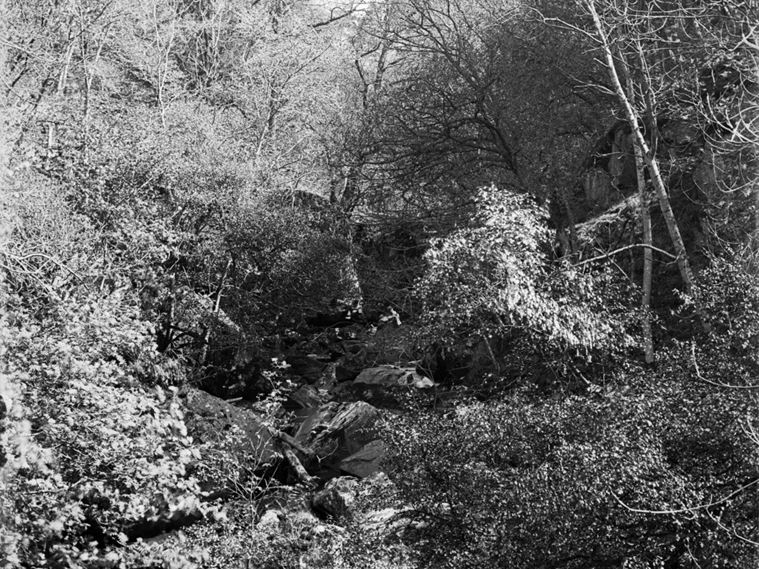
Northumberland
National Park

Newcastle upon Tyne
Local Authority District

Gateshead
Local Authority District